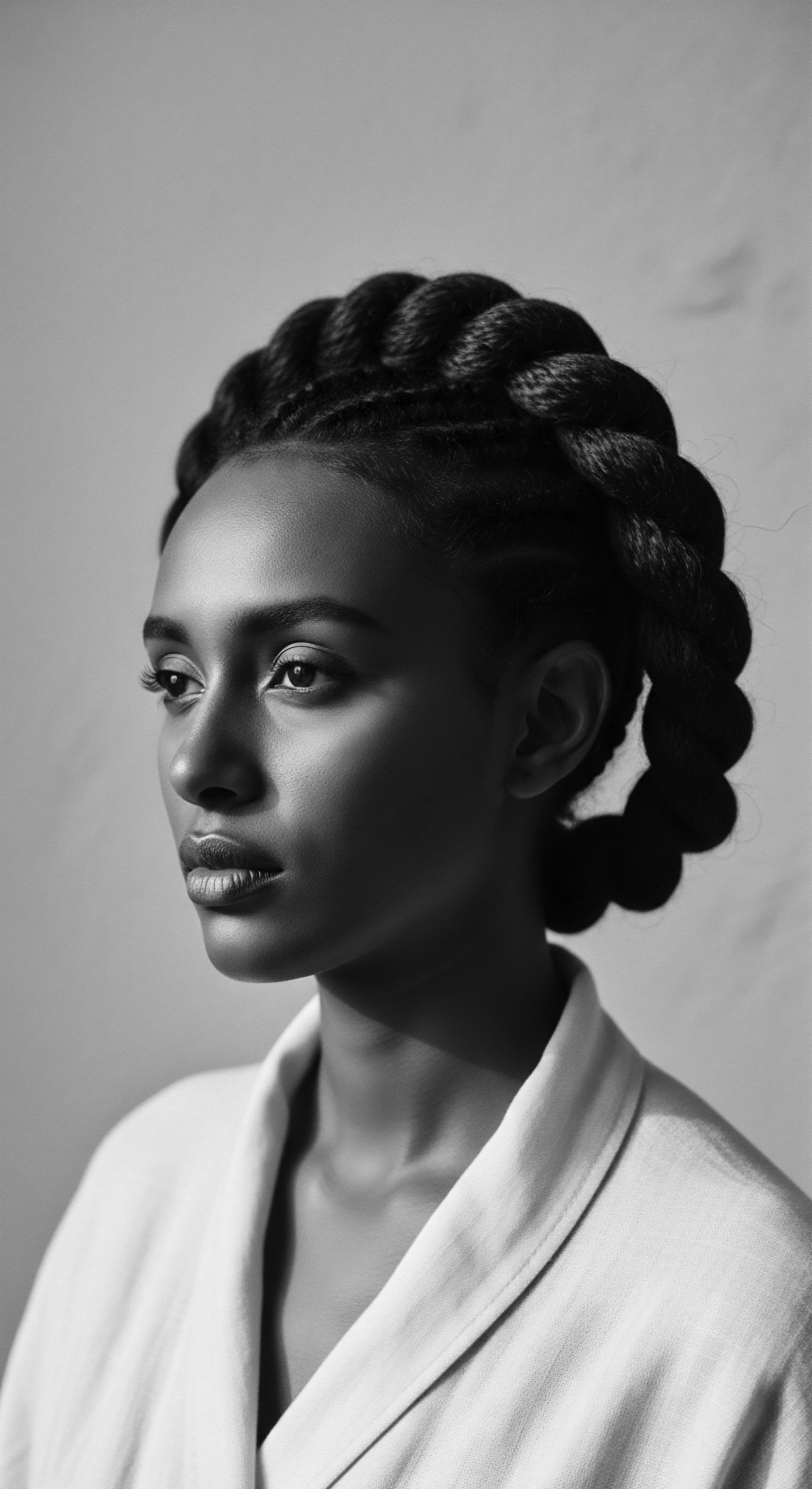
Roots
The stories held within each strand of textured hair are ancient, whispers from ancestral realms that speak of identity, resilience, and profound cultural connection. For generations, protective hairstyles have served not merely as methods for maintaining hair health, but as living archives of Black cultural identity, a heritage passed through time and across continents. They are a tangible link to a past where hair was a revered marker of personhood, a silent language communicating tribal affiliation, social standing, age, and spiritual conviction.
Before the transatlantic passage, in the vibrant societies of Africa, hair preparation was a communal ritual, an intimate moment shared amongst kin. Skilled hands would meticulously section and adorn hair, transforming it into intricate designs that spoke volumes without uttered words. This practice, rooted deeply in communal care, reflects a fundamental understanding of hair not just as a biological outgrowth, but as a spiritual crown, a point of access to ancestral wisdom and divine energy. The head was often considered the highest part of the body, closest to the heavens, making its adornment and protection sacred.
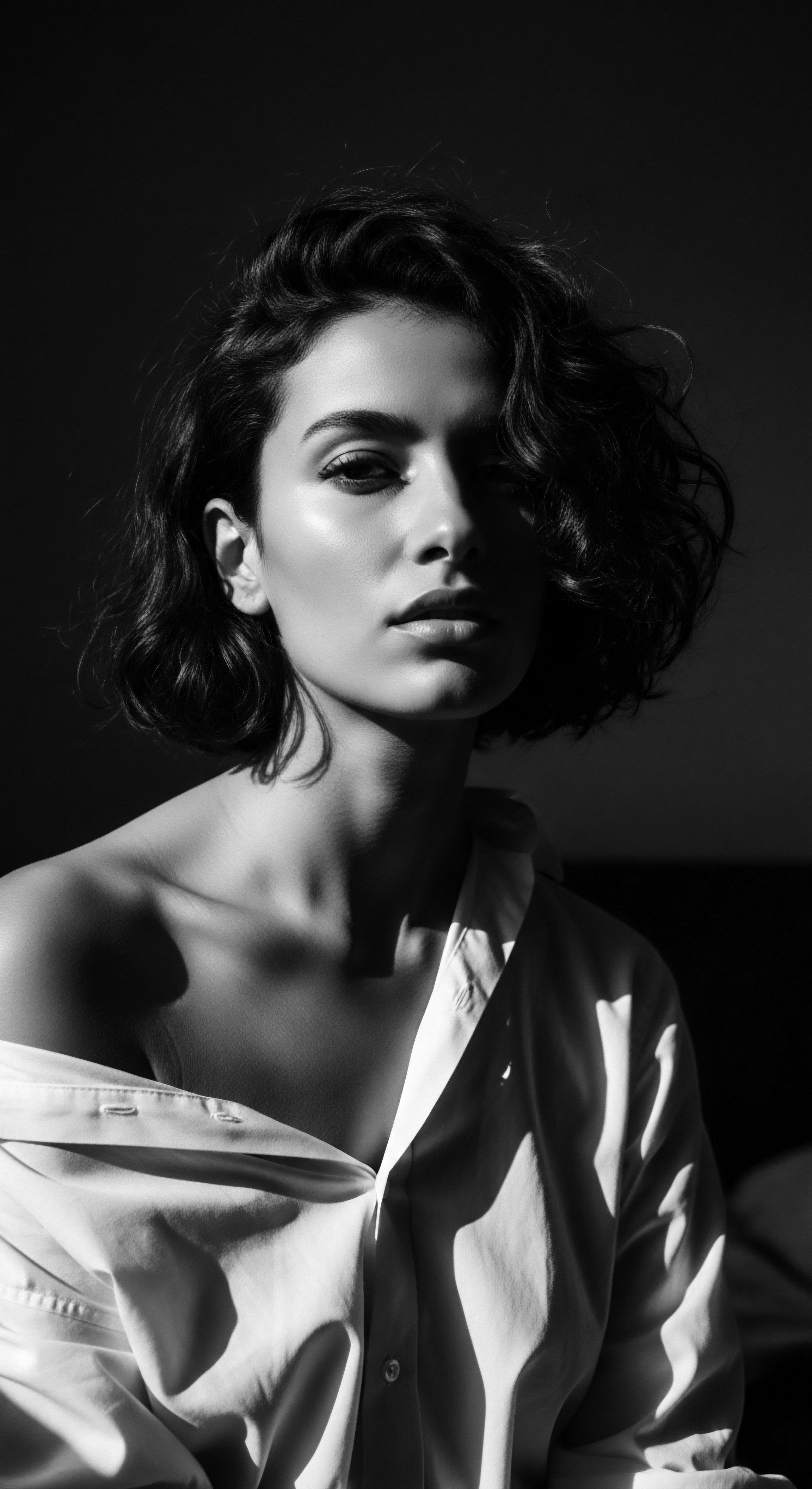
Understanding Textured Hair’s Ancestral Structure
The fundamental understanding of textured hair begins at its very structure, a biological marvel shaped over millennia. Afro-textured hair, commonly found among people of African descent, exhibits a unique elliptical cross-section, differing significantly from the circular shafts of other hair types. This flattened shape contributes to its characteristic tight curls, coils, or zigzag patterns. The helical nature of each strand, with its twists and turns, lends itself to the remarkable volume and spring evident in Afro-textured hair.
Protective hairstyles serve as living archives of Black cultural identity, a heritage passed through time and across continents, speaking volumes of ancestral wisdom.
This unique morphology, while granting magnificent versatility, also presents specific care considerations. The tightly coiled structure can make it challenging for the scalp’s natural oils, sebum, to travel down the entire length of the hair shaft, leading to inherent dryness. This reality necessitates greater attention to moisture retention, a practice understood intuitively by ancestral communities who used natural butters, herbs, and oils from their environment for hair sustenance and shield.
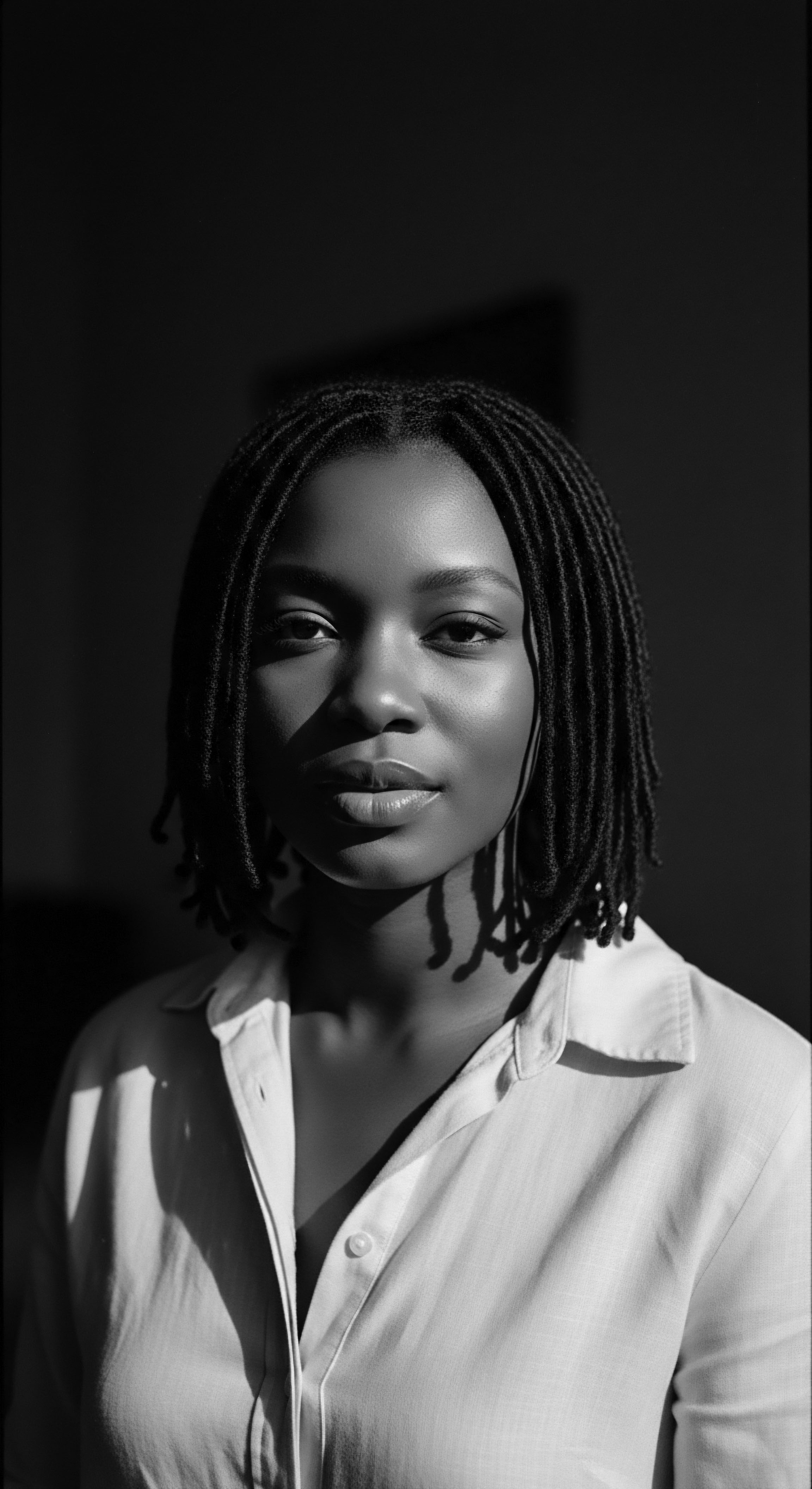
How Does Hair Structure Relate to Traditional Styling?
The intrinsic characteristics of textured hair directly relate to the historical and ongoing preference for protective styles. The natural tendency for afro-textured hair to knot and tangle more readily than straighter hair types means gentle handling and specific styling methods are essential for its preservation. Traditional African communities developed practices that honored this hair reality, creating styles that minimized daily manipulation while safeguarding the strands from environmental elements.
These methods allowed hair to rest, grow, and retain moisture, even without the array of products available today. The very act of coiling and braiding, therefore, became a biological necessity intertwined with cultural expression.
Consider the ancient practices of the Himba tribe in Namibia, who traditionally coat their hair with a red ochre paste called Otjize. This compound, consisting of butterfat and ochre, not only serves as a symbol of beauty and connection to the land and ancestors but also acts as a practical protectant against the sun and insects. Such practices stand as a testament to ancestral ingenuity, demonstrating how an understanding of hair’s elemental biology informed heritage-rich care rituals.
| Ancestral Component Natural Oils and Butters (e.g. Shea Butter, Coconut Oil) |
| Traditional Application in Heritage Used for moisture, shine, and hair flexibility. Often applied as part of daily or weekly rituals. |
| Modern Parallel/Scientific Understanding Modern science confirms these natural emollients provide lipid barriers, reducing transepidermal water loss and enhancing cuticle health. |
| Ancestral Component Herbs and Plant Extracts (e.g. Henna, Amla, various leaves) |
| Traditional Application in Heritage Employed for conditioning, strengthening, and sometimes natural coloring or cleansing. |
| Modern Parallel/Scientific Understanding Contemporary trichology recognizes the antioxidant, anti-inflammatory, and conditioning properties of various botanicals for scalp and hair health. |
| Ancestral Component Clay and Earth Pigments (e.g. Ochre) |
| Traditional Application in Heritage Served as protectants against sun and pests, also for ceremonial and aesthetic purposes. |
| Modern Parallel/Scientific Understanding Offers UV protection and physical barrier benefits; modern equivalents are sometimes found in mineral-based sunscreens for hair or scalp masks. |
| Ancestral Component These practices highlight a timeless understanding of hair protection, adapted through generations for unique hair realities. |
The lexicon used to describe textured hair today, while often influenced by modern scientific classification, still holds echoes of historical perceptions. Terms like “kinky” or “coarse,” once used with derogatory intent, are being reclaimed by communities, standing as descriptors of natural beauty and ancestral lineage. The journey of naming and understanding textured hair’s varieties is deeply connected to a heritage of resilience against imposed beauty standards.
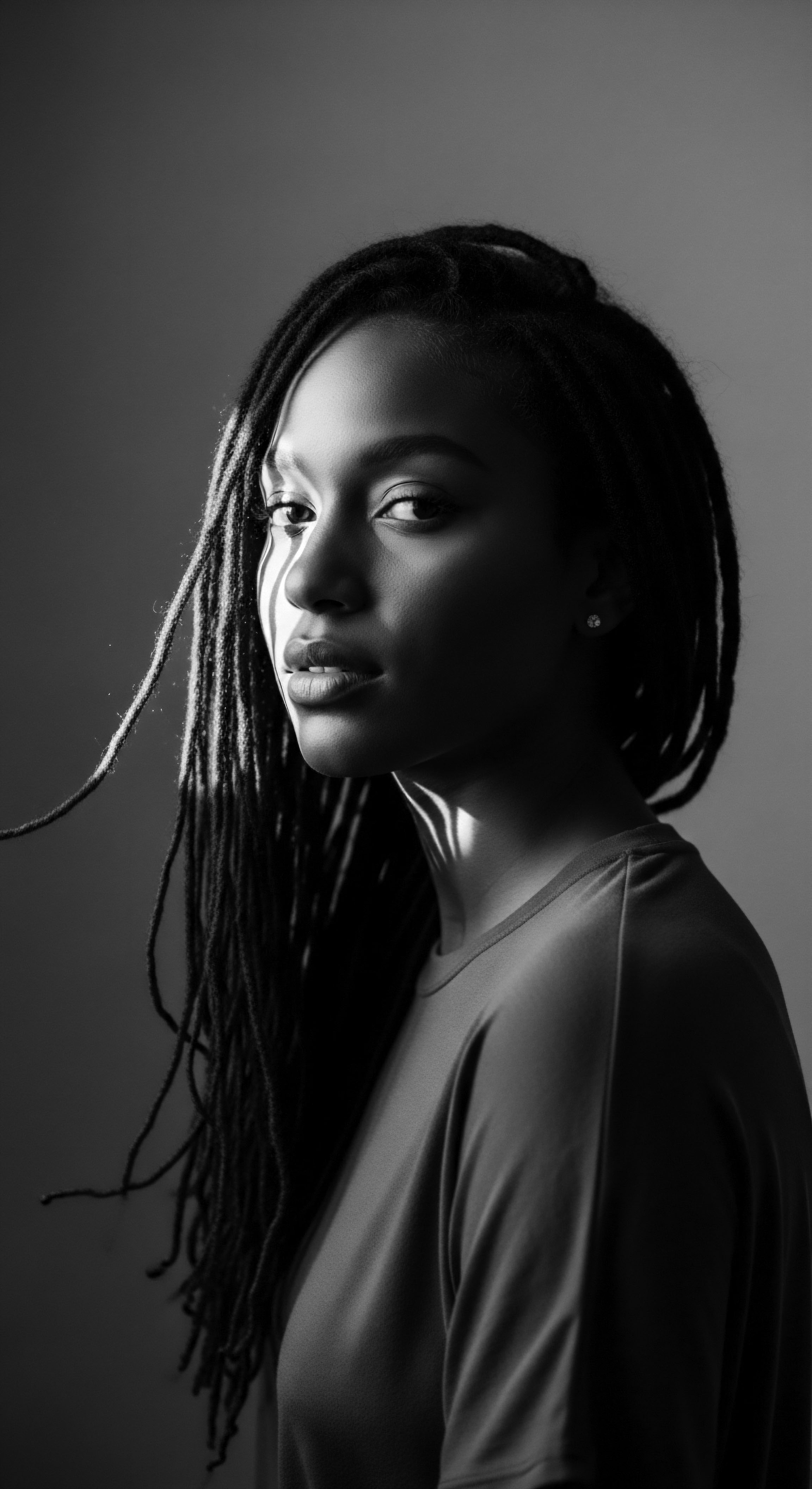
Ritual
The ritual of protective hairstyling in Black cultural identity extends far beyond mere aesthetic pursuit; it stands as a profound declaration of heritage, a practice steeped in communal care, spiritual resonance, and cultural preservation. These styles, shaped by generations, became conduits for intergenerational teaching and expressions of belonging, carrying forward practices that predate colonial encounters. The time spent in communal hair sessions was, and for many still is, a cherished space for storytelling, shared wisdom, and strengthening family bonds.

Ancient Rites and Styling Traditions
Across various African societies, hairstyles served as intricate communication systems. Cornrows, for instance, a technique with origins dating back at least 3000 BCE in regions like the Sahara’s Tassili Plateu, were not only practical for managing hair but also conveyed significant information about a person’s age, marital status, social rank, or even spiritual beliefs. The Yoruba People of Nigeria, for example, crafted highly symbolic styles, where specific patterns communicated community roles and even direct connections to deities. Each braid, each twist, held a story, a purpose.
The ancestral practices surrounding these styles often involved specific tools and natural elements. Combs made from wood, bone, or metal, alongside natural oils like shea butter and animal fats, were essential for preparing and maintaining hair. These tools, simple yet effective, underscore a deep relationship with the earth and its offerings, further cementing the heritage aspect of hair care. The act of braiding or twisting could take hours, often spanning days for complex styles, transforming the process into a sacred, social occasion.

How Did Protective Styles Evolve Through Enslavement?
The horrific era of the transatlantic slave passage attempted to sever these deep connections. Enslaved Africans often had their heads shaved upon arrival in the Americas, a dehumanizing act aimed at erasing their identity and cultural ties. Yet, even under extreme oppression, the spirit of hair heritage persisted. Protective styles became powerful tools of resistance and survival.
Consider the profound historical example of enslaved Africans using Cornrows as Covert Maps for Escape Routes. In Colombia, for instance, King Benkos Biohó, an escaped slave, orchestrated an intelligence network where women braided intricate patterns into their hair, symbolizing roads and rivers, providing directions to freedom. Some even hid rice seeds and gold fragments within their braids, securing sustenance and resources for their arduous journeys.
This practice is a chilling testament to ingenuity and the enduring power of hair as a vessel for survival. This historical application of protective styles transcends mere adornment; it positions hair as a strategic artifact, a silent accomplice in the pursuit of liberation.
Protective hairstyles became powerful tools of resistance and survival, even serving as covert maps for escape routes during the horrific era of enslavement.
After the abolition of slavery, the legacy of hair manipulation continued, influenced by Eurocentric beauty standards that labeled textured hair as “unruly” or “bad”. Chemical straighteners became prevalent, a means of assimilation for many seeking social and economic acceptance. Despite this, the memory of ancestral styles never truly faded, continuing as an undercurrent of resilience within Black communities.
- Cornrows ❉ Originating in ancient Africa, these tight, scalp-hugging braids served as markers of tribal identity and social status. During enslavement, they transformed into coded messages and literal maps for freedom.
- Bantu Knots ❉ Traced back to the Bantu-speaking communities of the 2nd millennium BCE, these coiled buns held spiritual significance and later became a versatile protective option.
- Locs ❉ Seen in various African cultures as symbols of strength, spirituality, and higher power, often associated with warriors or priests. They hold a long history of cultural and spiritual reverence.
| Era/Context Pre-Colonial Africa |
| Styling Techniques Braiding (cornrows, single plaits), twisting, coiling, threading, elaborate updos. |
| Typical Tools/Materials Bone/wood combs, fingers, natural oils, butters, clay, plant fibers, beads, cowrie shells. |
| Era/Context Slavery Era |
| Styling Techniques Simplified braiding, cornrowing (often for practicality and communication), head wraps. |
| Typical Tools/Materials Fingers, improvised combs, whatever minimal oils/greases were accessible. |
| Era/Context Post-Slavery/Early 20th Century |
| Styling Techniques Chemical straightening, pressing (hot combs), some continued braiding. |
| Typical Tools/Materials Hot combs, chemical relaxers, basic combs, brushes. |
| Era/Context Mid-20th Century (Civil Rights/Black Power) |
| Styling Techniques Natural Afros, re-emergence of braids and locs. |
| Typical Tools/Materials Afro picks, wide-tooth combs, hands. |
| Era/Context Contemporary Era |
| Styling Techniques Extensive range of braids, twists, locs, natural styles, extensions, wigs. |
| Typical Tools/Materials Specialized combs, brushes, various hair products, synthetic/human hair extensions. |
| Era/Context The adaptation of techniques and tools reflects both enduring traditions and responses to changing historical circumstances. |

Relay
The relay of protective hairstyles across generations stands as a powerful testament to the enduring spirit of Black cultural identity, a story of resistance, adaptation, and affirmation. This practice, initially rooted in ancestral traditions, continually absorbed new meanings and responsibilities as Black communities navigated displacement, oppression, and ultimately, liberation movements. The very act of choosing to wear one’s hair in a protective style became a complex interplay of personal expression and collective heritage, a declaration within varied social landscapes.
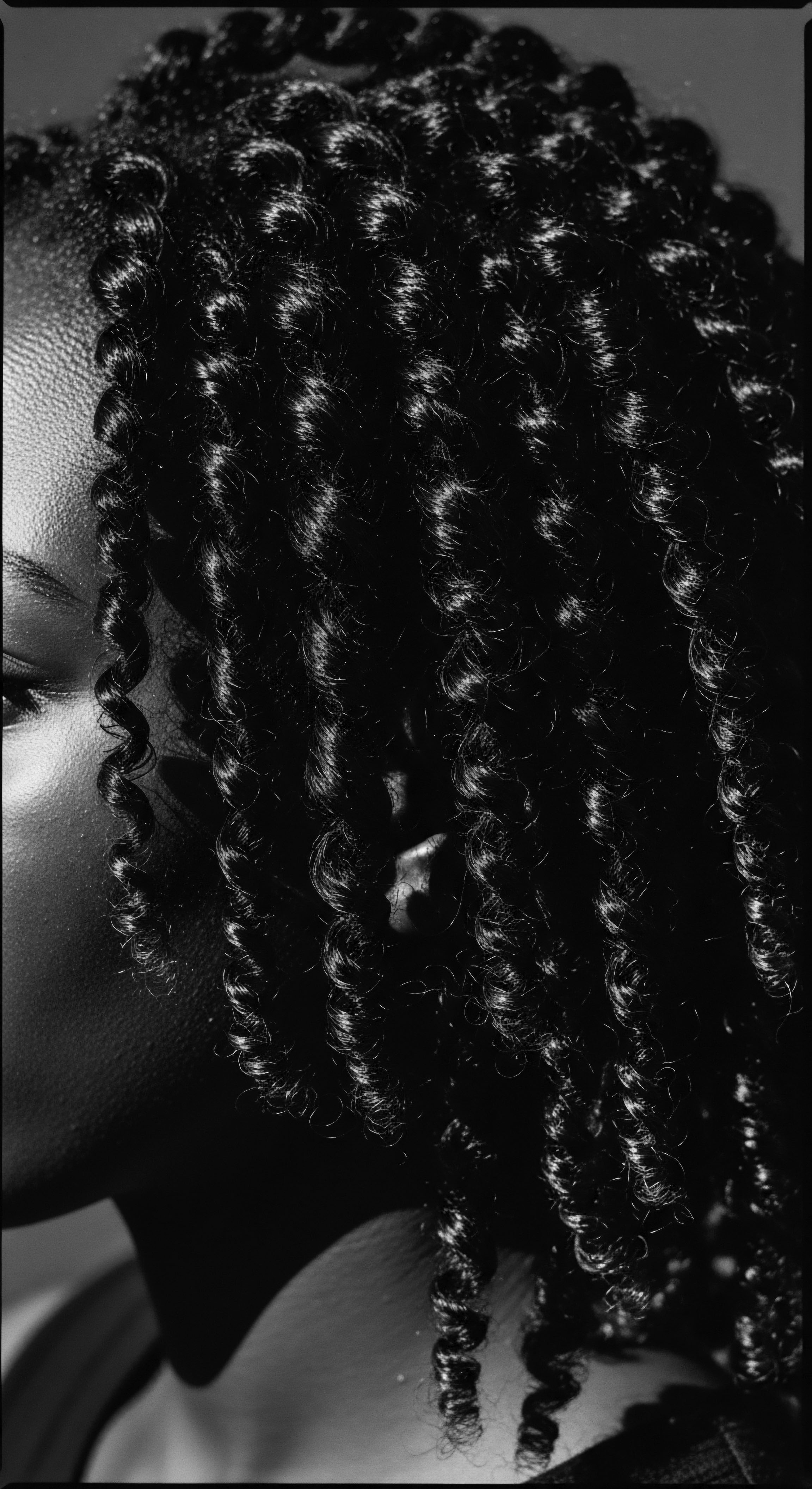
Hair as a Symbol of Resistance and Affirmation
During the periods of enslavement and subsequent racial discrimination, Black hair was systematically stigmatized. Slave owners shaved heads to erase identity, and later, societal pressures pushed for conformity to Eurocentric beauty standards, promoting straightened hair as the “acceptable” norm. Yet, in the face of such adversity, protective styles persisted as defiant acts of cultural preservation. The resilience of these practices speaks to an inherent strength within communities, a refusal to completely abandon a tangible connection to their origins.
The Civil Rights and Black Power movements of the 1960s and 1970s marked a significant reawakening, a widespread embrace of natural, textured hair as a symbol of Black pride and a rejection of oppressive beauty ideals. The Afro, in particular, became an icon of this era, a voluminous declaration of self-acceptance and political consciousness. It represented a reclaiming of African roots, challenging the notion that Black features were inferior. This period saw a powerful surge in the visibility of braids, twists, and locs, transforming them from mere styles into potent symbols of cultural and political solidarity.
The choice of a protective hairstyle often serves as a profound statement of personal identity interwoven with collective ancestral memory, especially when challenging dominant beauty standards.

Understanding the Socio-Cultural Resonance
The significance of protective hairstyles extends to the nuanced ways they navigate social spaces. In many professional or academic environments, textured hair and its protective styles continue to face discrimination, leading to laws like the CROWN Act in several US states, which prohibit race-based hair discrimination. This ongoing struggle highlights how deeply hair is intertwined with societal perceptions of professionalism, beauty, and racial bias. Dr.
Jennifer Leath, an associate professor of Black religion, notes that “The hair of people of African descent has, historically, been a site for the expression of a violent and violating curiosity on the part of those who colonized, conquered, and trafficked people of African descent” (Leath, as cited in Karmali, 2025). This statement underscores the historical weaponization of Black hair as a means of control and othering.
The choice of a protective style today carries this complex history. For some, it is a statement of political alignment, a conscious act of rejecting assimilation. For others, it is a practical choice for hair health, allowing for length retention and reduced manipulation.
Still, for many, it represents a deep, personal connection to an ancestral lineage, a way to honor and carry forward the traditions of those who came before. These styles embody a living heritage, constantly evolving yet firmly rooted.
- Cultural Preservation ❉ Protective styles maintain a tangible link to African heritage, preserving practices and aesthetics despite historical attempts at erasure.
- Community Building ❉ Hair styling sessions historically served as social gatherings, strengthening bonds and passing down oral histories and techniques.
- Identity Markers ❉ Styles communicate individual and collective identity, signifying pride, self-acceptance, and connection to Black and mixed-race experiences.
- Resistance and Advocacy ❉ Wearing natural or protective styles can be an act of defiance against Eurocentric beauty standards and discriminatory practices.
The resilience inherent in textured hair—its ability to coil, stretch, and spring back—mirrors the enduring spirit of the communities it adorns. Protective hairstyles, through their very nature, minimize manipulation, which helps prevent breakage and supports length retention. This biological reality reinforces the ancestral wisdom behind such styles ❉ they are a physical shield, allowing hair to thrive even under challenging conditions.
The science of textured hair, with its unique challenges related to moisture retention and fragility due to its elliptical shaft and numerous curl points, validates the protective strategies developed over centuries. The continued popularity and innovation in protective styling, from the traditional box braids to contemporary knotless variations, stand as a testament to their functional and symbolic value.
In the broader cultural landscape, protective styles serve as powerful visual narratives. They prompt dialogue, challenge preconceived notions of beauty, and contribute to a global recognition of textured hair’s versatility and cultural richness. The ongoing movement for hair acceptance, exemplified by legislation like the CROWN Act, underscores the societal shift towards valuing hair diversity and dismantling historical prejudices. This movement is a direct descendant of the acts of resistance carried out through hair for centuries, demonstrating how the past informs and empowers the present.
| Style Category Braids (e.g. Cornrows, Box Braids, Fulani) |
| Historical/Cultural Heritage Ancient African origins, markers of tribal identity, social status, and communication of escape routes during slavery. |
| Contemporary Symbolism/Adaptation Celebration of African ancestry, versatile fashion statements, low-maintenance options for natural hair, symbol of self-love and cultural connectedness. |
| Style Category Twists (e.g. Two-strand twists, Senegalese twists) |
| Historical/Cultural Heritage Traditional African method for coiling hair, often used for spiritual rituals or as precursor to locs. |
| Contemporary Symbolism/Adaptation Protective styling, definition of natural curl patterns, alternative to braids, expression of personal style. |
| Style Category Locs (e.g. Free-form, Sisterlocs) |
| Historical/Cultural Heritage Signified spiritual connection, strength for warriors, and religious devotion in various African and diasporic communities. |
| Contemporary Symbolism/Adaptation Spiritual journey, deep connection to heritage, natural hair freedom, statement of identity and individuality. |
| Style Category Bantu Knots |
| Historical/Cultural Heritage Ancient technique from Southern African Bantu communities, used for setting curls or as a style itself, carrying spiritual meanings. |
| Contemporary Symbolism/Adaptation Temporary curl definition, heat-free styling method, nod to ancestral practices, playful aesthetic. |
| Style Category These styles represent a living heritage, their forms and meanings adapting across time while retaining their core connection to identity. |
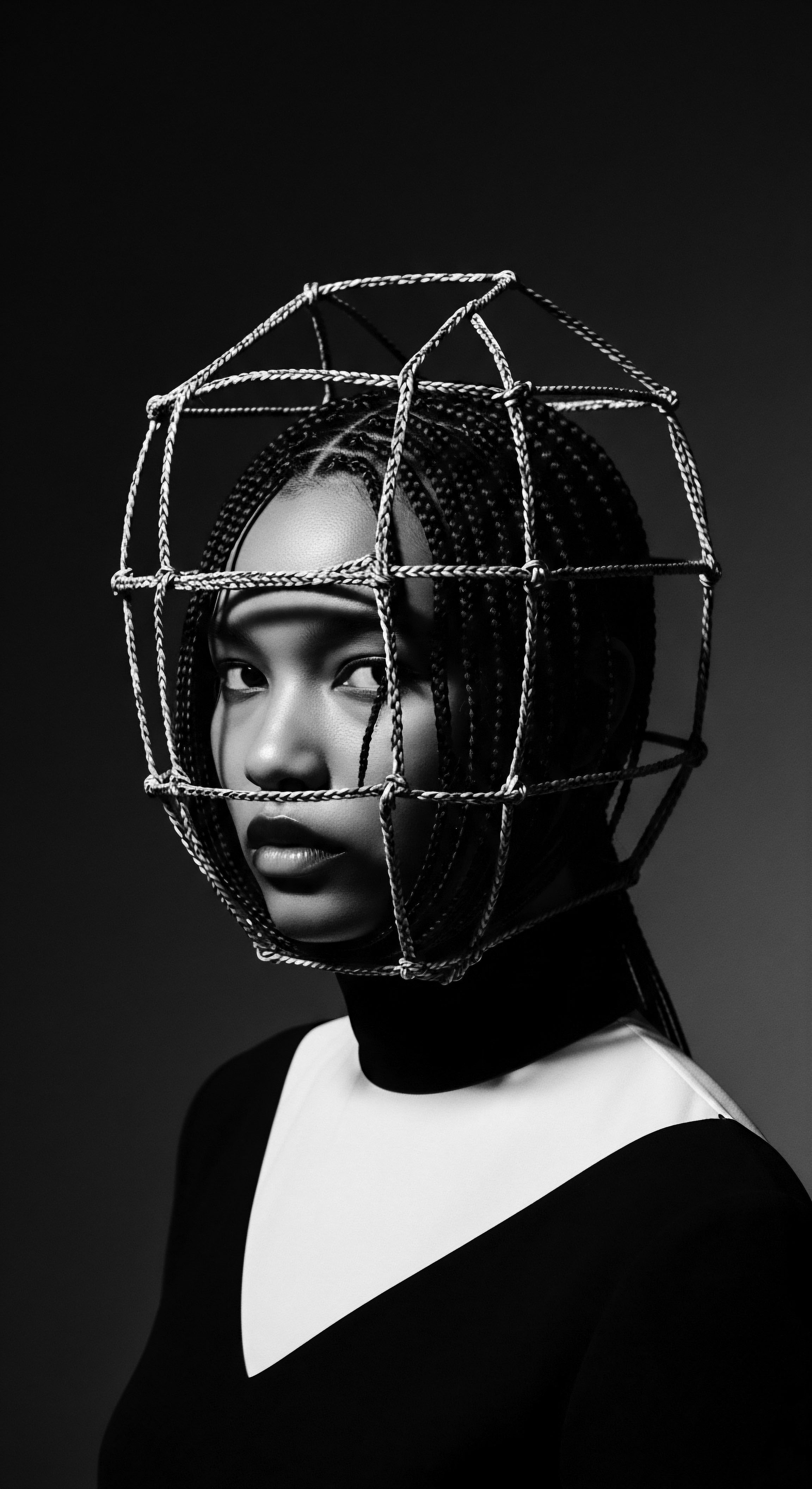
Reflection
As we close this exploration into the role of protective hairstyles in Black cultural identity, a truth emerges ❉ each coil, each braid, each careful wrap holds more than just strands of hair. They hold stories. They hold memory.
They hold the undeniable soul of a strand, stretching from the deepest ancestral roots to the living expressions of today. This enduring heritage of textured hair is not a static artifact of the past; it is a dynamic, breathing archive, constantly being written and re-written by hands that care, by spirits that remember.
The journey of protective styles, from ancient African communal rituals to defiant acts of survival during enslavement, and now to celebrated declarations of identity and self-acceptance, reminds us of hair’s power. It is a power residing in its ability to connect us to a profound past, to ground us in a resilient present, and to shape a future where every texture is seen, honored, and understood. The deliberate care given to textured hair through these styles is an echo of ancestral wisdom, a testament to the fact that safeguarding our hair is, indeed, safeguarding a piece of our very being, a precious part of our collective human story.
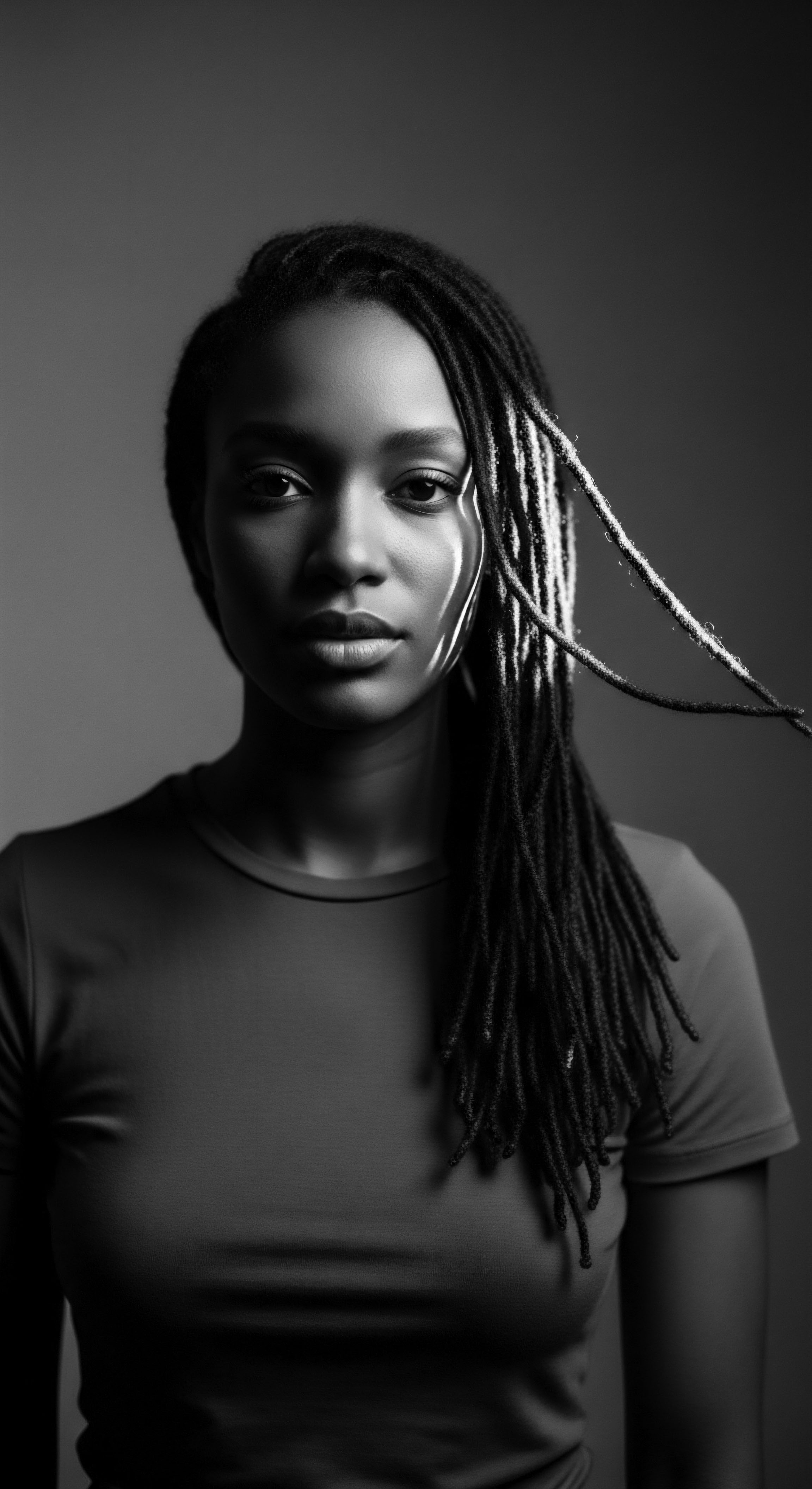
References
- Karmali, A. (2025, February 7). History, identity, and community ❉ The significance of Black hair. The Queen’s Journal.
- Byrd, A. D. & Tharps, L. (2001). Hair Story ❉ Untangling the Roots of Black Hair in America. St. Martin’s Publishing.
- Patton, T. O. (2006). Black Women in Television ❉ An Illustrated History and Bibliography. McFarland.
- Mercer, K. (1994). Welcome to the Jungle ❉ New Positions in Black Cultural Studies. Routledge.
- Akbar, N. (1998). Light from Ancient Africa. New Mind Productions.
- Hooks, B. (1995). Art on My Mind ❉ Visual Politics. The New Press.
- Banks, I. (2000). Hair Matters ❉ Beauty, Power, and Black Women’s Consciousness. New York University Press.
- White, V. (2023, July 20). Embracing and Caring for Afro-textured Hair. Keep The Faith Magazine.
- Davis, A. (2005). Are Prisons Obsolete? Seven Stories Press.
- Ladner, J. A. (1971). Tomorrow’s Tomorrow ❉ The Black Woman. Doubleday.
